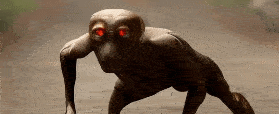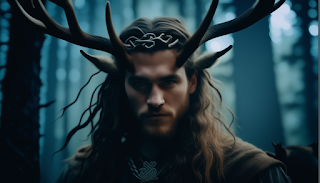In Celtic cultures, Samhain was seen as a time when the veil between the worlds of the living and the dead was at its thinnest, allowing spirits to pass between the two. As a result, Samhain was a time of both celebration and fear. People would light bonfires to ward off evil spirits, wear costumes to disguise themselves from the spirits, and tell stories of the dead.
Today, Samhain is still celebrated by some Pagans and Wiccans, as well as by people who are interested in Celtic culture. It is also the origin of the modern holiday of Halloween.
The text below is the script for the video:
Hello and welcome to my channel. In this video, we will trace the roots of Halloween and the tales that made it scary and fun. Let’s get to the lore.
Samhain is a pagan festival celebrated by ancient Celts. It marks the end of harvest season and the beginning of winter. It is held from October 31 to November 1. Seeing any relations yet?
For this video, I’m not looking to trace the origins of modern day Halloween. I just want to talk about the spooky creatures involved.
The Celts believe that the barriers between our world and the Otherworld are thinnest at this time. And that allows more interaction between humans and creatures of the Otherworld. By the way, Otherworld is what the Celts call the other side. And oh boy, these things are wild.
1) Faeries
First, there are fairies. And who doesn’t love faeries. Tinkerbell, Fairy Godmother and Navi from Zelda are all great.
But it sounds like Celts are cautious of faeries. The faeries, however, at least to me, are the most interesting part of Samhain. According to the lore, Faeries are tall and beautiful, with long flowing hair and pale skin. And right away, I’m picturing Elves from Lord of the Rings, not the small Tinkerbell-sized faeries.
Some have animal-like features such as wolves or elks or bunnies or other animals in Irish wilderness.
They could shapeshift into animals to escape human detection.
What made the Celts wary of faeries are the kidnappings. And there are many tales of kidnappings.
The reasons for kidnapping range from not-so-bad, such as being taught magic which is the story of Thomas the Rhymer.
To really bad, such as slavery, torture, prison or something altogether atrocious.
Or in the case of Tam Lin, being forced to fight in the Faerie army.
Although Faeries live in Otherworld, some live on our side of the veil. They make their homes in Sidhs, which is Celtic for “fairy mounds”. Sidhs are typically located in remote areas of forests and mountains.
During Samhain, Faeries are super busy looking for humans and souls to bring back to the Otherworld. This is when they go on their legendary wild hunts.
2) Lady Gwyn
Closely associated with Faeries is the legend of Lady Gwyn. She’s a headless woman dressed in white accompanied by a black pig that, in some tales, is said to be the devil.
She made a deal with Faeries, now leads wild hunts for them during Samhain to capture lost souls or humans.
3) Humans Crossing
The breach goes both ways and humans cross over, too. But they learn to avoid getting kidnapped by the faeries by disguising as animals or monsters. Hmmm, just like wearing costumes.
I'm curious to see how the Otherworld looks like?
4) Pukah
Pukahs are another creature that’s very active during Samhain. They are tricksters and shapeshifters.
As shifters, they can change into animals that are typical of Irish fauna. So we’re talking foxes, hare, deers and many others. Some stories say that Pukahs can also turn invisible. But I’m thinking more along the lines of “undetected” or “hard to detect” because they changed into a common animal. And they’re right in front of you. You just don’t see them in their natural form.
Pukahs are also known to change into a human-animal hybrid. Often described as, for example, a man with antlers or pointed fox nose or rabbit ears.
Already, you should be picking up on modern-day costumes such as bunny ears. Pukahs seem like they could be a lot of fun.
And, of course, there’s the trickster personality of the Pukahs. In this case, they tend to be mischievous to the locals, such as stealing food, hiding belongings, leading people astray and other acts resulting in harm or great inconvenience.
5) Dullahan
Dullahan are headless riders who are said to be harbingers of death to those who see them. Meaning that if you see a dullahan, you’re gonna die in the near future.
There are many tales about the dullahan. In some versions, they ride ghostly or skeletal horses. The horse's hooves are said to make no sound as they clatter along the ground, making it impossible to hear the Dullahan coming.
Still, in some versions, the Dullahan is said to carry a whip made of a human spine. He uses this whip to lash at people crossing his path. The whip is said to be poisonous, and anyone who is struck by it is said to die instantly.
FYI, I made a video about the Headless Horseman legend in Virginia. The dullahan is where the horseman’s myth came from.
6) Banshees
In some stories, the banshee is a type of female fairy who wails the impending death of a family member. Just like faeries, banshees are said to be very active during Samhain. Banshees are often seen near the home of the person who is about to die.
The banshee is typically described as a tall, pale woman with long, flowing hair. She is often seen wearing a white cloak. Her face is often distorted with grief, and her eyes are said to be red and watery. A banshee's wail is said to be so mournful that it can be heard for miles around.
7) Kelpies
If you’re near water during Samhain, you have to look out for Kelpies.
These water spirits are said to take the form of beautiful horses near a lake, river or loch. And when an unwary stranger tries to mount them, they’ll drag that stranger to watery death.
8) Will-o'-the-wisps
Will-o-wisps are often described as small flickering lights that dance or move erratically over marshes. Turns out that they are mischievous spirits said to lead travelers astray. They are often seen at Samhain, when the nights are dark and foggy.





.png)

.png)

.png)















.png)




